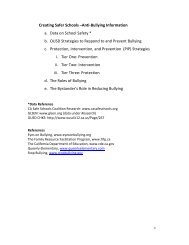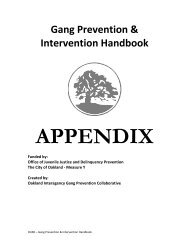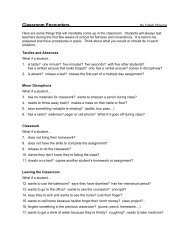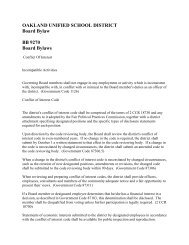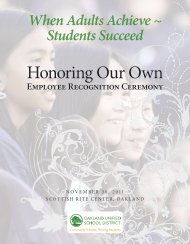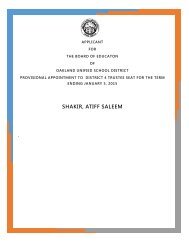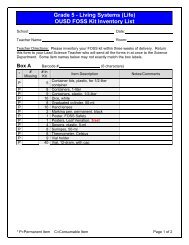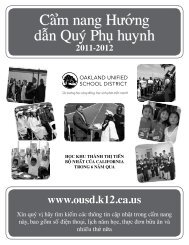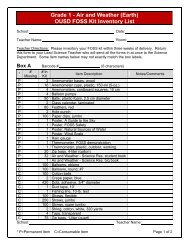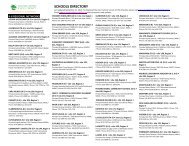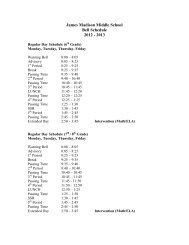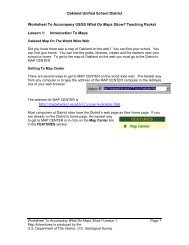Science Framework, part 1 - Free Downloads (CA Dept of Education)
Science Framework, part 1 - Free Downloads (CA Dept of Education)
Science Framework, part 1 - Free Downloads (CA Dept of Education)
- No tags were found...
You also want an ePaper? Increase the reach of your titles
YUMPU automatically turns print PDFs into web optimized ePapers that Google loves.
20Chapter 2The Nature <strong>of</strong><strong>Science</strong> andTechnologyThe Mathematics <strong>Framework</strong> containsan important precaution that equallyapplies to science: “The use <strong>of</strong> technologyin and <strong>of</strong> itself does not ensureimprovements in student achievement,nor is its use necessarily betterfor student achievement than aremore traditional methods.” 5• Simulate or model investigations andexperiments that would be too expensive,time-consuming, dangerous, orotherwise impractical. Investigationand Experimentation Standard 1.grequires students in grades ninethrough twelve to “recognize the usefulnessand limitations <strong>of</strong> models andtheories as scientific representations<strong>of</strong> reality.” 6• Support universal access to sciencecontent through assistive technologies,consistent with a student’s 504accommodation plan 7 or individualizededucation program. 8Resources for Teaching<strong>Science</strong> and TechnologyAs students learn the skills andknowledge called for in the <strong>Science</strong>Content Standards for California PublicSchools they will come to know implicitlythe nature <strong>of</strong> science. They willunderstand the key concepts, principles,and theories <strong>of</strong> science and willhave practiced scientific inquiry. Theguidance and information provided inthis framework may be used to implementeffective science education programsin public schools from kindergartenthrough grade twelve that willprovide students with the opportunityto become scientifically literate andunderstand the nature <strong>of</strong> science andtechnology.The number <strong>of</strong> electronic resourcesfor science education is increasing rapidly.The California Learning ResourceNetwork provides a way for educators to identifysupplemental electronic learning resources,including Web sites, that simultaneouslymeet local instructionalneeds and align with the <strong>Science</strong> ContentStandards and this framework.Educators should comply with applicablepolicies <strong>of</strong> their school districtsregarding Internet resources.When science and technology arediscussed in the context <strong>of</strong> history andhistorical figures, instruction is <strong>of</strong>tenenriched. The History–Social <strong>Science</strong>Content Standards follows this principle.9 The standards:• Include references to scientists suchas Ben Franklin, Louis Pasteur,George Washington Carver, MarieCurie, Albert Einstein, NicolausCopernicus, Galileo Galilei, JohannesKepler, and Isaac Newton.• Cover inventors such as ThomasEdison, Alexander Graham Bell, theWright brothers, James Watt, EliWhitney, and Henry Bessemer.• Encompass the effects <strong>of</strong> the informationand computer revolutions,changes in communication, advancesin medicine, and improvements inagricultural technology.<strong>Science</strong> and Society<strong>Science</strong> does not take place in asecret place isolated from the rest <strong>of</strong>society. Nor are the technologies thatit creates shielded from public scrutiny.The continued expansion <strong>of</strong> scientificknowledge and the new technologiesthat spin <strong>of</strong>f that knowledge will inevi-



